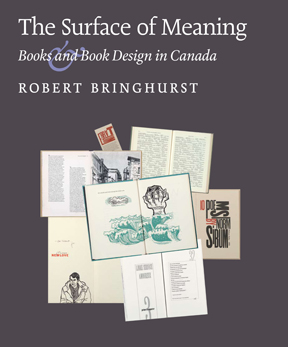I am pretty much the only person who thinks graphic-design criticism is a rotting corpse. Barely anyone has noticed. But what has made me unpopular in certain snob circles is calling Robert Bringhurst a crashing bore.
He is. And his project is not, as it seems, a fulsome discussion of text typography and book design; his project is one of beating you over the head with the glories of aboriginals and their languages. (When will people learn?) That is all he’s about; everything else is like a magician’s diversion.
 The prologue to Bringhurst’s latest doorstopper, The Surface of Meaning: Books and Book Design in Canada, baldly states:
The prologue to Bringhurst’s latest doorstopper, The Surface of Meaning: Books and Book Design in Canada, baldly states:
[W]hat is a book? Most of us think of books as physical objects…. In oral cultures, books are indeed invisible – but in every healthy and mature oral culture, books are present.
Actually, “most of us think of books” as involving the written word. And we’re right. Oral histories are not books. Blue is not green.
Bringhurst attempts to distract us by claiming that, “[i]n electronic cultures, books can… flash across a screen, in a fleeting and unstable imitation of the printed page. It remains to be seen whether books in this form can interact as fruitfully with human attention and memory.” So an Indian tribe’s tall tale is still a book even if nobody remembers it, but an E-book might not be a book because it’s an unmemorable “imitation”? (Which of those was written down?)
And if we’ve spent all this time ignoring the glory of aboriginal languages, culture, and stories, why were there so many books of aboriginal-language transcription published in the 19th and 20th centuries that just Bringhurst’s excerpts of them run for 21 pages?
Confronted with 180 further pages of beauty shots of other (“real”) Canadian books, I did the obvious thing: I flipped through them the way an admin assistant flips through an issue of Vogue.
You think Bringhurst is important? Why, exactly?